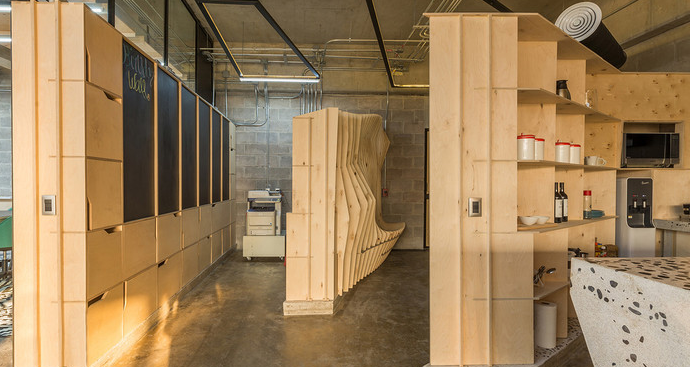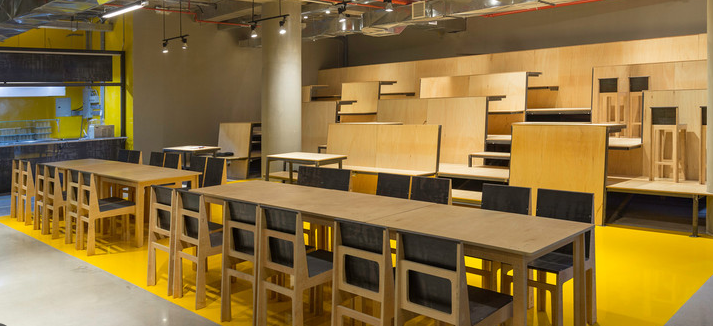In the ever-evolving landscape of craftsmanship, the marriage of traditional woodworking with modern digital design has created a dynamic synergy that pushes the boundaries of creativity and innovation. This article explores the fascinating realm where woodworking and digital design intersect, highlighting how these seemingly disparate worlds come together to produce awe-inspiring results.

The Fusion of Artistry and Technology
Digital Precision
Digital design tools allow for precise planning and visualization of woodworking projects before execution.
Creative Exploration
Digital design platforms provide endless possibilities for experimenting with different woodworking techniques and aesthetics.
Efficient Prototyping
Digital prototypes streamline the design process, enabling woodworkers to test ideas without consuming physical resources.
Crafting in the Digital Age
Digital Blueprints
Woodworkers can create intricate project blueprints using design software, ensuring accurate measurements and cuts.
Virtual Workshops
Online woodworking communities and tutorials facilitate the learning and sharing of digital design skills.
Collaborative Endeavors
Digital platforms allow woodworkers from around the world to collaborate on projects, fostering global creativity.
Woodworking Design Software
Intuitive Interfaces
User-friendly design software makes digital design accessible even to those with limited technical experience.
3D Modeling
Design software enables the creation of detailed 3D models, offering a virtual preview of the final woodworking piece.
Material Visualization
Woodworkers can experiment with various wood types and finishes in the digital realm before committing to physical materials.
The Art of CNC Machining
Precision Cutting
Computer Numerical Control (CNC) machines execute intricate cuts and designs with unparalleled precision.
Custom Creations
CNC technology allows woodworkers to create intricate carvings and patterns that were once painstakingly crafted by hand.
Mass Customization
CNC machining facilitates the production of unique pieces on a larger scale, merging craftsmanship with efficiency.
Augmented Reality and Woodworking
Virtual Reality Visualization
Augmented reality applications enable woodworkers to visualize their projects in a real-world setting before construction.
Interactive Learning
AR platforms offer interactive woodworking tutorials, enhancing the learning experience for enthusiasts.
Personalized Design
AR tools allow customers to preview custom-designed pieces in their own spaces before ordering.
Challenges and Advancements
Technical Learning Curve
While digital design tools offer immense benefits, there is a learning curve to mastering these technologies.
Balancing Traditions
Integrating digital design into woodworking requires finding the right balance between modern techniques and traditional craftsmanship.
Future Innovations
As technology advances, new tools, and techniques will continue to shape the future of woodworking.
Embracing the Hybrid Approach
Innovative Combinations
Woodworkers are increasingly incorporating design elements into their handcrafted pieces.
Pushing Boundaries
The fusion of design and woodworking encourages artists to experiment and redefine artistic boundaries.
Personal Expression
Digital tools provide woodworkers with a new avenue for expressing their unique creativity.
Learning and Mastery
Skill Development
Learning digital design enhances a woodworker’s skill set and opens doors to new creative possibilities.
Diverse Projects
The synergy between design and woodworking allows for the creation of diverse projects, from intricate carvings to functional furniture.
Continuous Learning
Mastery of digital design is an ongoing journey, offering endless opportunities for growth and innovation.
The Future of Woodworking
Integration of AI
Artificial intelligence is likely to play a role in streamlining design processes and generating creative ideas.
Hybrid Craftsmanship
The future of woodworking lies in embracing the hybrid approach, where design and traditional techniques coexist harmoniously.
Conclusion
In conclusion, The intersection of woodworking and digital design presents a compelling narrative of tradition meeting innovation. As woodworkers embrace the potential of digital tools, they redefine what’s possible within the realm of craftsmanship. By seamlessly integrating precision, creativity, and the artistry of woodworking with the capabilities of design, craftsmen are shaping a new era where tradition and technology harmoniously coalesce. This dynamic synergy is not only revolutionizing the craft but also inspiring a new generation of woodworkers to forge their paths of creativity and exploration.


